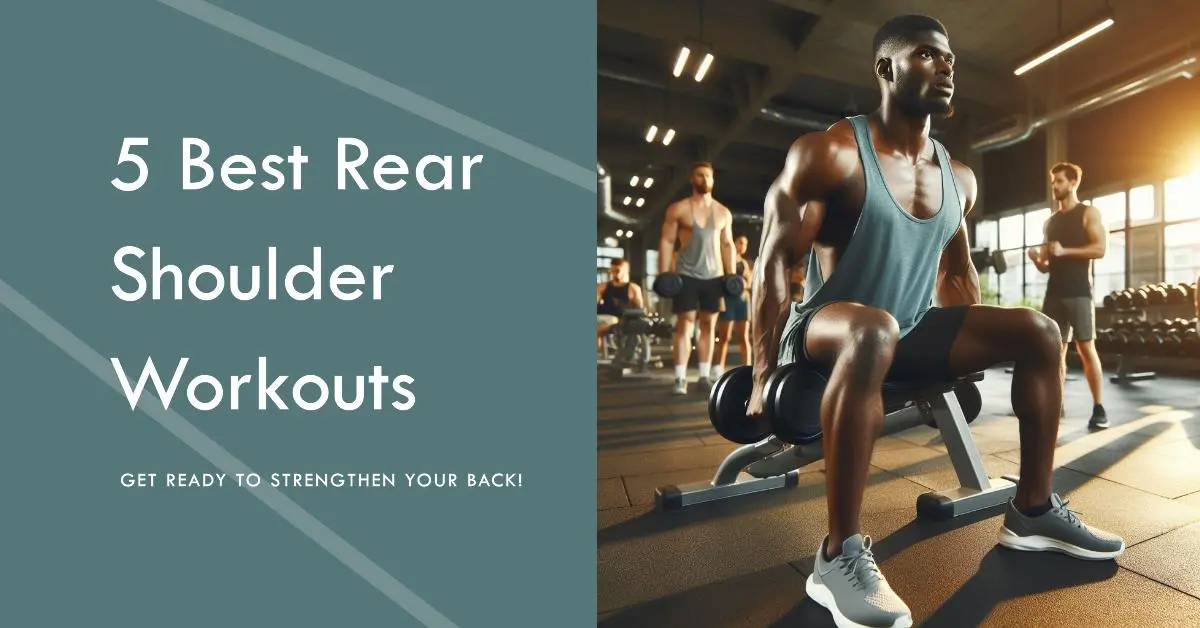The rear shoulder, or posterior deltoid, is a crucial muscle group for shoulder stability and overall shoulder aesthetics. Strengthening the rear delts not only improves shoulder health but also improves your physique by creating a balanced, rounded look. To target this area effectively, include the following best rear shoulder workouts into your routine. These exercises include reverse pec deck flyes, bent-over dumbbell lateral raises, face pulls, cable reverse flyes, and rear delt dumbbell rows. Each exercise targets the rear delts from different angles, ensuring comprehensive development and strength. Including these exercises will help you achieve well-rounded, strong shoulders.
Rear Shoulder Anatomy
The rear shoulder, or posterior deltoid, is crucial for overall shoulder strength and stability. To effectively target this area, include exercises like bent-over dumbbell raises, reverse pec deck flyes, face pulls, cable reverse flyes, and rear deltoid rows into your workout routine. These amazing exercises engage the rear shoulder muscles from different angles, promoting balanced development and reducing the risk of injury. Consistently performing these movements with proper form will lead to noticeable improvements in rear shoulder strength and aesthetics.
Benefits of Rear Shoulder Workout
There are the list of some benefits of including the best rear shoulder workouts into your routine:
- Improved Posture: Strengthening the rear shoulders helps in pulling your shoulders back, correcting rounded shoulders, and improving overall posture.
- Reduced Risk of Injuries: Strong rear shoulders contribute to shoulder stability, reducing the risk of injuries during daily activities and workouts.
- Balanced Muscle Development: Focusing on the rear shoulders helps balance muscle development, preventing muscle imbalances that can lead to injuries and postural issues.
- Aesthetic Appeal: Well-developed rear shoulders can improve the overall appearance of your upper body, giving you a more balanced and defined look.
- Improved Functionality: Strong rear shoulders improve your ability to perform daily tasks that involve lifting, pulling, and reaching.
- Shoulder Strength and Stability: Targeting the rear delts improves shoulder strength and stability, which is crucial for maintaining proper posture and preventing injuries, especially in activities that involve overhead movements.
- Improved Shoulder Function: Strengthening the rear delts contributes to better overall shoulder function, improving your ability to perform daily activities and sports that require shoulder mobility and strength.
- Improved Upper Body Definition: Developing the rear delts can add definition and detail to your upper body, complementing the appearance of your chest, arms, and back muscles.
Best Rear Shoulder Workouts
Rear Delt Flyes
Rear delt flyes target the rear deltoids and are an effective way to isolate and strengthen these muscles. To perform this exercise, sit on a bench with a dumbbell in each hand. Allow the dumbbells to hang under you as you bend forward. Keeping your arms slightly bent, raise the dumbbells out to the sides until they are in line with your body. Lower them back down with control and repeat for a complete set.

Face Pulls
Another great exercise for the rear deltoids is the face pull.To finish this exercise in the gym, fasten a rope to a high pulley. With your back to the machine, take hold of the rope using an overhand hold. Keep your elbows out to the sides and upward as you pull the rope towards your face. After the exercise, carefully return to the beginning position while squeezing your shoulder blades together.
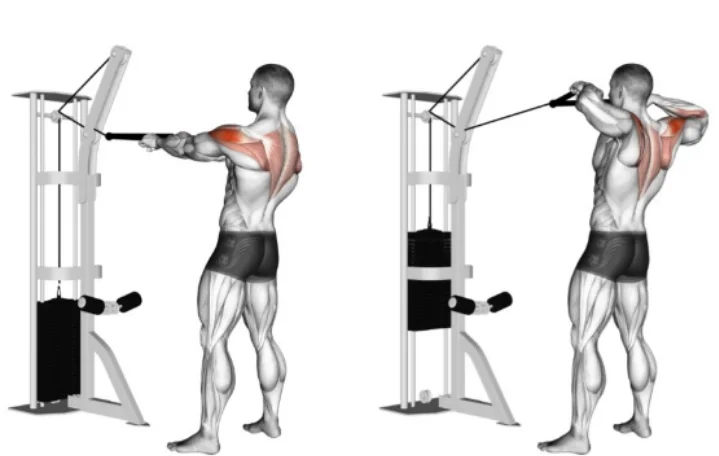
Bent Over Reverse Flyes
Bent over reverse flyes are a great way to target the rear deltoids and the muscles of the upper back. To perform this exercise, hold a pair of dumbbells and bend forward at the waist, keeping your back flat. Raise the dumbbells out to the sides so that your arms are parallel to the floor while folding your elbows a little. Lower them back down and repeat for a complete set.
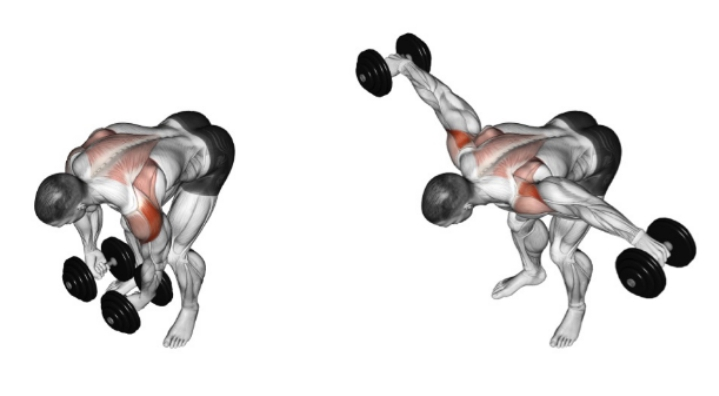
Cable Reverse Flyes
Cable reverse flyes are a variation of the bent over reverse flyes that use a cable machine for resistance. To perform this exercise, set the cable machine to a low position and attach a D-handle to the cable. Step away from the machine and grab the handle with one hand. With a slight bend in your elbow, raise the handle out to the side until your arm is parallel to the ground. Lower it back down and repeat on both sides for a complete set.
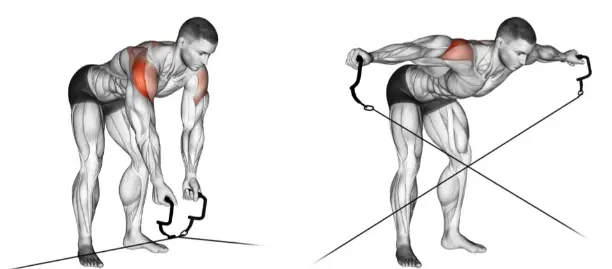
Rear Delt Row
The rear delt row is a compound exercise that targets the rear deltoids as well as the muscles of the upper back. To perform this exercise, hold a barbell or dumbbells with an overhand grip and bend forward at the waist, keeping your back flat. Pull the weight towards your lower chest, keeping your elbows high and out to the sides. Lower the weight back down and repeat for a complete set.
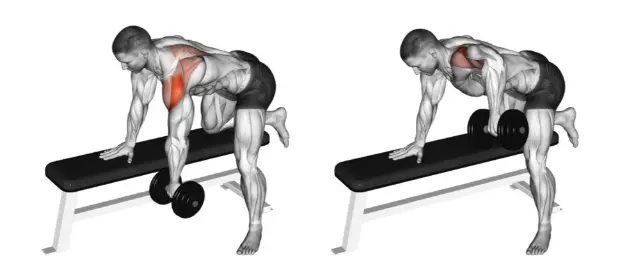
Tips for Effective Rear Shoulder Workout
There are some tips for making your rear shoulder workout more effective:
- Focus on proper form: Maintain a neutral spine and engage your core to prevent injury and ensure proper muscle activation.
- Use a variety of exercises: Include different rear deltoid exercises, such as reverse flies, face pulls, and rear delt raises, to target the muscles from various angles.
- Mind-muscle connection: Focus on feeling the rear deltoid muscles working during each exercise to maximize their activation.
- Gradually increase intensity: Gradually increase the weight or resistance as your strength improves to continue challenging your muscles.
- Stay consistent: Consistency is key to seeing results, so make sure to include rear shoulder exercises into your regular workout routine.
Common Mistakes to Avoid
There are some common mistakes to avoid which mostly individuals can do in their rear shoulder workout:
- Neglecting Warm-Up: The chance of damage can rise if you fail to properly warm up. Always warm up your shoulders before starting your rear shoulder workout.
- Using Too Much Weight: Using weights that are too heavy can compromise your form and lead to injury. Once your strength increases, start with lighter weights and progress slowly.
- Limited Range of Motion: Not fully extending and contracting your shoulder muscles can reduce the effectiveness of the exercise. Ensure you’re performing the full range of motion for each exercise.
- Overtraining: Overtraining the rear shoulders can lead to fatigue and potential injury. Allow proper rest between workouts to allow for recovery and muscle growth.
How Often Should You Do Rear Shoulder Workout?
The frequency of rear shoulder workouts depends on your fitness level, goals, and recovery ability. Generally, performing rear shoulder exercises 1-2 times per week is sufficient for most individuals. However, if you’re specifically targeting rear deltoid development or addressing weaknesses, you may increase the frequency to 2-3 times per week with proper rest between sessions. Listen to your body, monitor progress, and adjust the frequency as needed to optimize results while avoiding overtraining and injury.
Frequency and Duration
For rear shoulder workouts, aim to train these muscles 1-2 times per week. And each session should last around 30-45 minutes, focusing on compound and isolation exercises targeting the rear delts. Start with 3-4 sets of each exercise and aiming for 8-12 repetitions per set with a moderate to heavy weight. Allow for proper rest between sets (approximately 1-2 minutes) to maintain intensity and maximize muscle stimulation. Additionally, ensure you’re incorporating proper warm-up and cool-down routines to prevent injury and optimize performance during your rear shoulder workouts.
Conclusion
In conclusion, the rear shoulder, or posterior deltoid, is a crucial muscle group for shoulder stability and overall shoulder aesthetics. Strengthening the rear delts not only improves shoulder health but also improves your physique by creating a balanced and rounded look. To target this area effectively, include the following best rear shoulder workouts into your routine, reverse pec deck flyes, bent-over dumbbell lateral raises, face pulls, cable reverse flyes, and rear delt dumbbell rows. Each exercise targets the rear delts from different angles, ensuring comprehensive development and strength. Including these exercises will help you achieve well-rounded, strong shoulders.
FAQs
Q. What are the benefits of rear shoulder workouts?
Rear shoulder workouts can help improve posture, reduce the risk of injury, and improve the overall appearance of your shoulders.
Q. Can I do rear shoulder workouts at home?
Yes, rear shoulder workouts can be done at home with minimal equipment, such as dumbbells or resistance bands.
Q. How long does it take to see results from rear shoulder workouts?
The time it takes to see results from rear shoulder workouts can vary depending on your fitness level and consistency with your workouts. However, you may start to notice improvements in strength and definition within a few weeks.
Q. Are rear shoulder workouts suitable for beginners?
Yes, beginners can benefit from rear shoulder exercises. To reduce the risk of injury, it’s crucial to begin with smaller weights and focus on form.
Q. Can I include rear shoulder workouts into my existing workout routine?
Yes, you can include rear shoulder workouts into your existing routine. Just be sure to balance your workouts to target all areas of the shoulder effectively.

